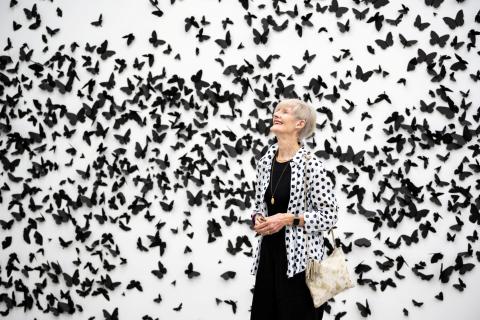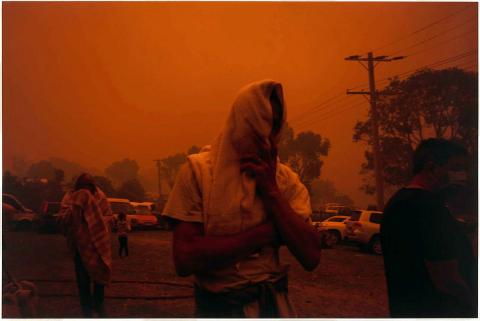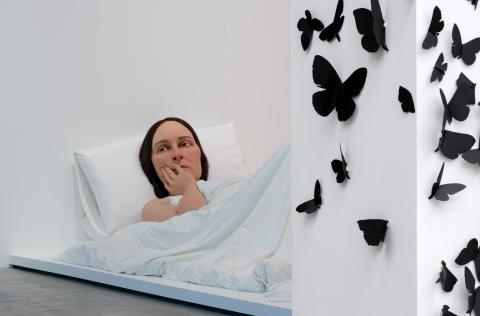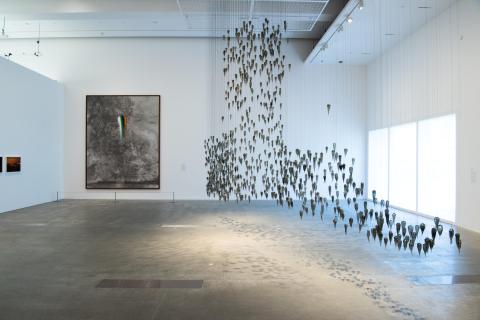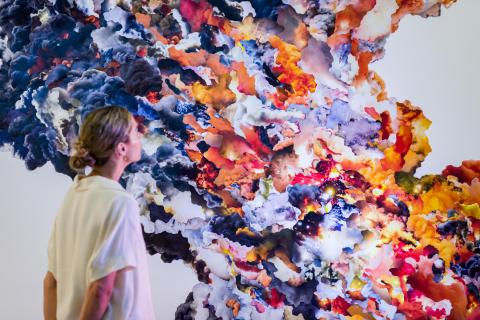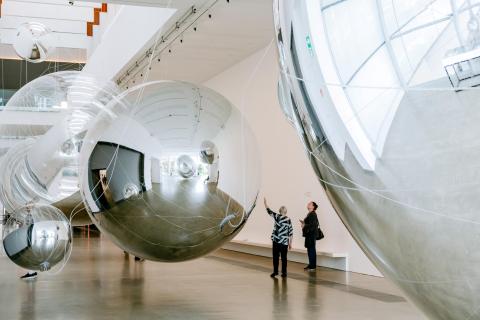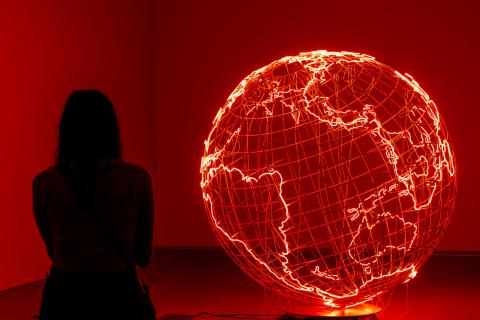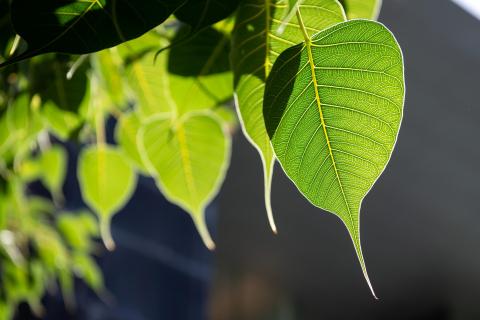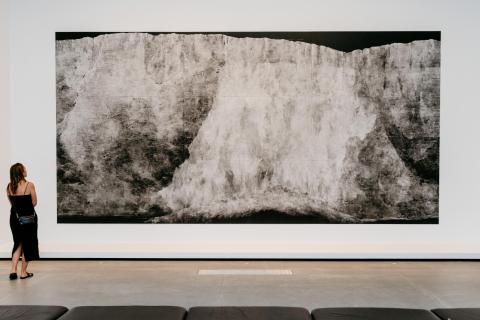AIR: Invisible
Sometimes what we cannot see makes us anxious. Early in the COVID-19 pandemic we focused on sanitising our hands to remove unseen pathogens; later we studied the invisible spread of aerosols. Ron Mueck’s oversized woman In bed 2005 seems frozen mid-lockdown. Is she concerned, fearful or pensive? What is it she can see, but we can’t?
This chapter of the exhibition is also about what we are unaware of or have chosen not to see, such as the suffering or lack of opportunity of others. ‘I can’t breathe’, said African-American George Floyd. His murder by a police officer in Minneapolis in 2020 resonated across the world not only because of the horror of his last moments, but also because his experience was unsurprising to many who feel they too are living without truly breathing, without freedom.
When our capacity to see and care for one another breaks down, our societies are more likely to be plunged into turmoil. Palawa artist Jemima Wyman builds a picture of global unrest in Plume 20 2022, a collage of images of haze and smoke from protests and civil unrest. In Australia, we associate such plumes with bushfires. Rachel Mounsey captures the Black Summer fires that swept through her home in the remote coastal community of Mallacoota, Victoria, on New Year’s Eve 2019.
The colourful aerosol paint in Thu Van Tran’s Rainbow herbicides 2018 recalls the toxic defoliants sprayed over her country of birth, Vietnam. The lack of regard for people on the ground — their invisibility to those holding power — mirrors the First Nations experience of nuclear tests at Maralinga, South Australia, in the 1950s. Kokatha and Nukunu artist Yhonnie Scarce reflects on the lives lost and generations of health impacts sustained because of these tests. Her work Cloud Chamber 2020 evokes the rising blast of a nuclear explosion. For Carlos Amorales, the death of his grandmother sparked the creation of Black Cloud 2007/2018. Thousands of butterfly and moth species cut from black paper gather in the gallery, a reminder of the fragility of life.
Feature image: Work installed at GOMA for 'Air' (l–r): Rachel Mounsey's ‘Mallacoota fires in the sky’ series (detail) and Thu Van Tran's Rainbow herbicides 2018 / Collection: QAGOMA; and Yhonnie Scarce's Cloud Chamber 2020 / Collection: TarraWarra Museum of Art, Healesville / © The artists / Photograph: M Campbell, QAGOMA
